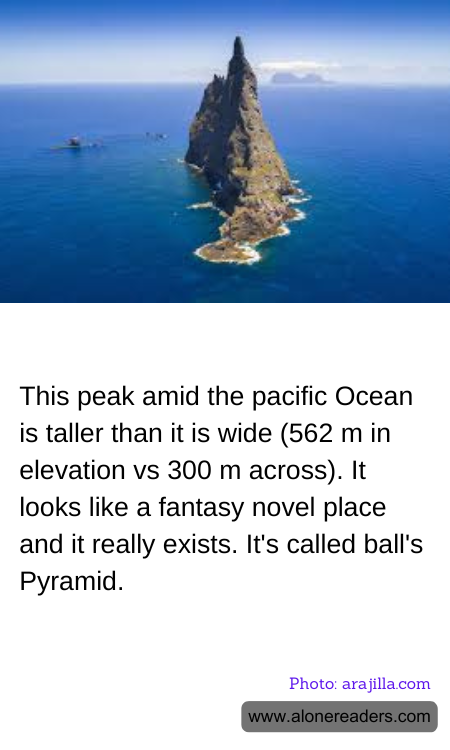
Rising sharply from the depths of the Pacific Ocean, Ball’s Pyramid presents an awe-inspiring sight that seems borrowed from the pages of a fantasy novel. Located 600 kilometers east of the Australian mainland and part of the Lord Howe Island Marine Park, this stunning natural skyscraper is actually the remnant of a long-eroded shield volcano and caldera, formed about 7 million years ago. Towering at 562 meters high, yet only 300 meters wide at its base, Ball’s Pyramid is striking not only for its height but also for its dramatic blade-like appearance.
Discovered in 1788 by Lieutenant Henry Ball, the commanding officer of the HMS Supply, Ball’s Pyramid has since drawn the attention of climbers and adventurers from all over the world. Despite its seemingly impenetrable facade, the first successful recorded ascent was made only in 1965 by a team of Australian climbers. Since then, it has become a destination for highly skilled climbers due to the sheer difficulty and risk associated with scaling its steep, rocky face.
Apart from its stunning geography, Ball’s Pyramid is also ecologically significant. It was once thought to be the only known habitat of the Lord Howe Island stick insect (Dryococelus australis), which was presumed extinct by the 1920s due to introduced rats. The rediscovery of this "land lobster" in 2001 on the rocky slopes of Ball’s Pyramid provided a miraculous exception and sparked conservation efforts to ensure the survival of this rare species, illustrating the pyramid’s role in biodiversity conservation.
The towering form and isolated location of Ball’s Pyramid combined with its ecological importance and historical allure make it one of the true natural wonders of the world. This pyramidal peak not only challenges adventurers to reach new heights but also stands as a sentinel for conservation efforts, reminding us of the incredible diversity and resilience of life on Earth. With its sharp summit piercing the skyline, Ball’s Pyramid continues to inspire and mystify, making it a geological treasure that captures the imagination like few places on Earth can.